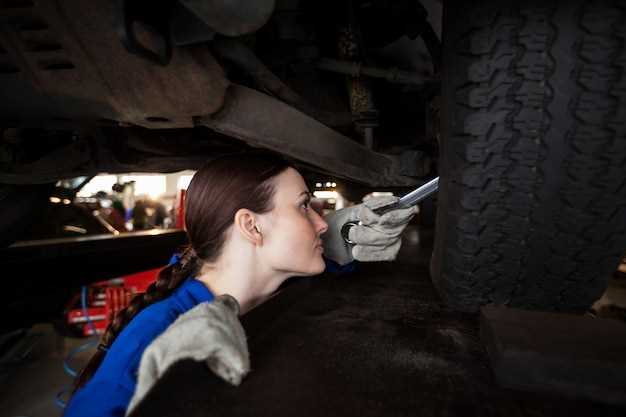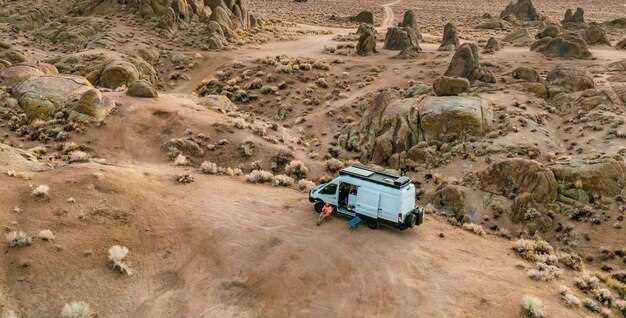
The Toyota Land Cruiser is renowned for its exceptional off-road capabilities, making it a popular choice among off-road enthusiasts. However, when it comes to optimizing its performance on challenging terrains, two key technologies come into play: lockers and limited-slip differentials (LSD). Understanding the differences between these two can significantly impact your driving experience and overall vehicle performance.
Off-road driving often requires a vehicle to navigate through mud, rocks, and steep inclines, where traction is paramount. Lockers provide maximum traction by locking the differential, ensuring that power is evenly distributed to both wheels on an axle. This results in enhanced grip, especially when one wheel encounters a less stable surface. In contrast, a limited-slip differential allows for some wheel slip while still providing better traction than an open differential. The decision between these two systems can greatly influence your success on the trail.
For those who frequently tackle rugged terrains, understanding how lockers or LSD can affect the Land Cruiser’s performance is essential. Whether it’s the complete lock of a differential or the gradual slip allowed by LSD, each system has its advantages and disadvantages. This article will delve deeper into the functional differences between lockers and LSD, helping you make an informed choice for your off-road adventures.
Understanding the Benefits of Lockers for Off-Roading

Lockers are an essential component for enhancing off-road performance, providing significant advantages in challenging driving conditions. They ensure that both wheels on an axle receive equal power, which is crucial when traversing uneven and slippery terrains.
Improved Traction: One of the primary benefits of lockers is improved traction. In off-road scenarios, it’s common for one wheel to lose grip while the other maintains traction. Lockers prevent this by locking the differential, allowing power to be evenly distributed to both wheels. This can be particularly beneficial when navigating through mud, sand, or rocky landscapes.
Enhanced Control: With lockers engaged, drivers experience increased control over their vehicle. This enhanced stability helps maintain forward movement in precarious conditions, reducing the likelihood of getting stuck. Off-roading often involves obstacles like boulders and deep ruts, where traditional open differentials may fail.
Better Climbing Ability: Lockers significantly improve a vehicle’s ability to climb steep inclines. When both wheels on an axle have equal power, the vehicle can push itself up slopes more effectively, reducing the chances of wheel spin and increasing confidence during climbs.
Versatile Performance: Lockers are not just beneficial in extreme situations; they also enhance overall vehicle versatility. They allow off-road enthusiasts to tackle a variety of terrains without requiring constant adjustments or modifications. This adaptability is crucial for those who frequently change their off-road environments.
Durability: Lockers are designed to withstand the demands of off-roading. Their robust construction offers reliability and longevity, making them a worthwhile investment for serious off-roaders. This durability ensures that the lockers can perform effectively over time, even under intense conditions.
In conclusion, incorporating lockers into an off-road vehicle substantially elevates performance and capability. They provide enhanced traction, control, climbing ability, versatility, and durability, all of which contribute to a more enjoyable and successful off-roading experience.
Evaluating LSD: When It’s the Right Choice for Trails
Limited Slip Differentials (LSD) can be an essential component for enhancing off-road performance, particularly in challenging trail environments. Unlike traditional open differentials, LSD allows for a certain degree of wheel slip while still providing torque to both wheels on an axle. This feature can be incredibly beneficial when navigating uneven terrain, steep inclines, and slick surfaces.
One of the key advantages of LSD is its ability to maintain traction even when one wheel loses grip. For instance, when driving on a muddy or rocky trail, the LSD automatically transfers power to the wheel with more traction, reducing the likelihood of getting stuck. This characteristic makes LSD an excellent choice for trail enthusiasts who often encounter variable conditions.
Moreover, LSD does not require the driver to actively engage or disengage a locking mechanism, which enhances the driving experience. The seamless operation of LSD can make it easier to navigate tricky off-road sections without worrying about manual adjustments, allowing the driver to focus more on steering and throttle control.
However, it’s important to consider the specific needs of your driving style and the type of trails you frequent. LSD works best in situations where traction loss is limited and can enhance performance on various surfaces. If your focus is primarily on heavily technical or extremely loose terrains where maximum traction is essential, fully locking differentials might be a better option.
Ultimately, evaluating whether LSD is the right choice for your Land Cruiser’s trail performance involves assessing your typical off-road conditions. If you often find yourself on moderate trails with some unevenness but not excessive challenges, LSD can be a versatile solution that balances traction and drivability.
Comparing Performance: Lockers vs. LSD in Challenging Conditions

In off-road scenarios, traction management is a critical factor impacting vehicle performance. Both lockers and limited-slip differentials (LSD) are designed to enhance traction, yet they operate under different principles, leading to distinct performance characteristics in challenging conditions.
Lockers, which include both selectable and automatic options, provide maximum traction by locking the two wheels on an axle together. This means that when one wheel encounters a slip, both wheels receive equal torque, making lockers exceptional for overcoming obstacles such as deep mud, rocky terrain, and steep inclines. The ability to lock the wheels ensures that power is effectively distributed, allowing the vehicle to maintain forward momentum even in the most challenging environments.
On the other hand, LSDs offer a more subtle approach to traction management. Instead of fully locking the wheels, an LSD allows for some degree of differentiation between wheels while still providing limited torque transfer to the wheel with less grip. This can be beneficial in situations where off-road drivers need to navigate loose surfaces without completely losing control. However, LSDs may struggle in extreme conditions where one wheel is completely off the ground or in deep ruts, as the limited slip may not provide enough torque to propel the vehicle forward effectively.
In scenarios that involve sharp turns or varied terrain, LSDs provide a more stable driving experience, allowing for quicker transitions and better handling on mixed surfaces. Conversely, lockers shine when facing difficult obstacles where maximizing grip is paramount. For instance, during rock crawling, a locked differential can maintain traction on uneven surfaces, while an LSD might leave one wheel spinning if it loses contact with the ground.
Ultimately, the choice between lockers and LSDs depends on the type of off-road conditions encountered. For serious off-road enthusiasts who frequently tackle extreme trails, lockers are often the preferred choice for their uncompromising traction. For those who engage in moderate off-roading and seek a balance between on-road comfort and off-road capability, LSDs may be a more suitable option.
